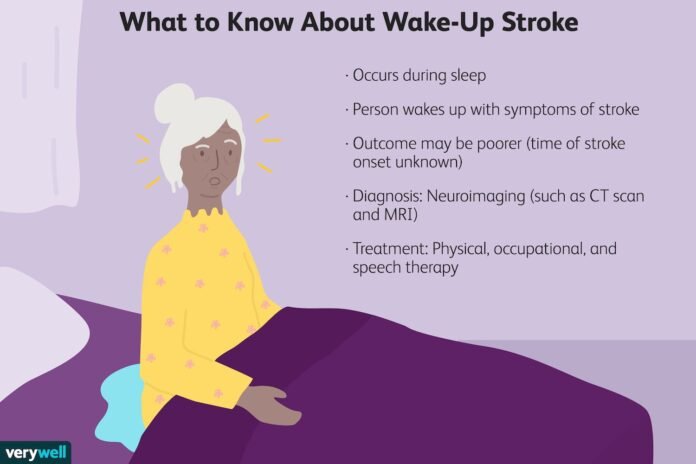In the realm of strokes, there exists a particular phenomenon that demands special attention, especially among the elderly and women. Referred to as a “wake-up stroke,” this condition manifests as a type of stroke wherein individuals experience the onset of symptoms either upon awakening or during the day, without any prior awareness of neurological deficits before going to sleep.
Unlike conventional strokes where symptoms typically emerge during wakefulness, wake-up strokes present a unique challenge. Many older individuals, particularly women, may find themselves experiencing a sense of disbalance or dizziness upon waking up. These symptoms may be accompanied by difficulties in comprehension and sudden weakness in the limbs, indicating the presence of a wake-up stroke.
One of the distinguishing features of wake-up strokes is the absence of prior symptoms before going to sleep. This characteristic adds complexity to the diagnosis and management of the condition, as individuals may not recognize the signs of stroke until they awaken. Consequently, delayed recognition and treatment of wake-up strokes can exacerbate their severity and increase the risk of long-term disability.
The elderly population, in particular, is vulnerable to wake-up strokes due to age-related factors such as reduced cerebral blood flow and increased prevalence of comorbid conditions like hypertension and diabetes. Women also face unique risk factors for wake-up strokes, including hormonal fluctuations associated with menopause and the use of hormone replacement therapy.
Given the potential severity of wake-up strokes, it is crucial for both healthcare professionals and individuals to be vigilant and proactive in identifying risk factors and seeking prompt medical attention. Timely intervention can significantly improve outcomes and reduce the likelihood of long-term disability.
Preventive measures play a crucial role in mitigating the risk of wake-up strokes, especially among high-risk populations. Lifestyle modifications such as maintaining a healthy diet, engaging in regular physical activity, and managing underlying health conditions like hypertension and diabetes can help reduce the likelihood of stroke occurrence.
Furthermore, raising awareness about the signs and symptoms of wake-up strokes is essential for empowering individuals to recognize and respond to potential emergencies promptly. Educating the public about the importance of seeking immediate medical attention in the event of stroke-like symptoms, even during sleep, can save lives and prevent debilitating consequences.
Wake-up strokes pose a considerable challenge not only in diagnosis but also in treatment. Unlike strokes that occur during waking hours, wake-up strokes may delay the recognition of symptoms and subsequent medical intervention. This delay can significantly impact the effectiveness of treatments such as thrombolysis, a time-sensitive therapy aimed at dissolving blood clots causing the stroke.
Another factor complicating wake-up strokes is the limited window of opportunity for administering thrombolytic therapy. Current guidelines recommend administering thrombolysis within a specific timeframe from the onset of symptoms, typically within 4.5 hours. However, in the case of wake-up strokes, determining the exact time of symptom onset can be challenging, potentially delaying treatment initiation.
Despite these challenges, advancements in imaging techniques such as magnetic resonance imaging (MRI) have improved the diagnosis and management of wake-up strokes. MRI scans can provide valuable insights into the extent and location of brain damage, guiding treatment decisions and prognosis assessment.
In addition to thrombolytic therapy, other interventions such as mechanical thrombectomy may be considered for eligible patients with wake-up strokes. Mechanical thrombectomy involves using specialized devices to remove blood clots from blocked blood vessels, restoring blood flow to the brain.
Furthermore, ongoing research into novel treatments and preventive strategies holds promise for improving outcomes in wake-up stroke patients. Clinical trials investigating the efficacy of neuroprotective agents and innovative rehabilitation approaches aim to optimize recovery and reduce disability associated with wake-up strokes.

